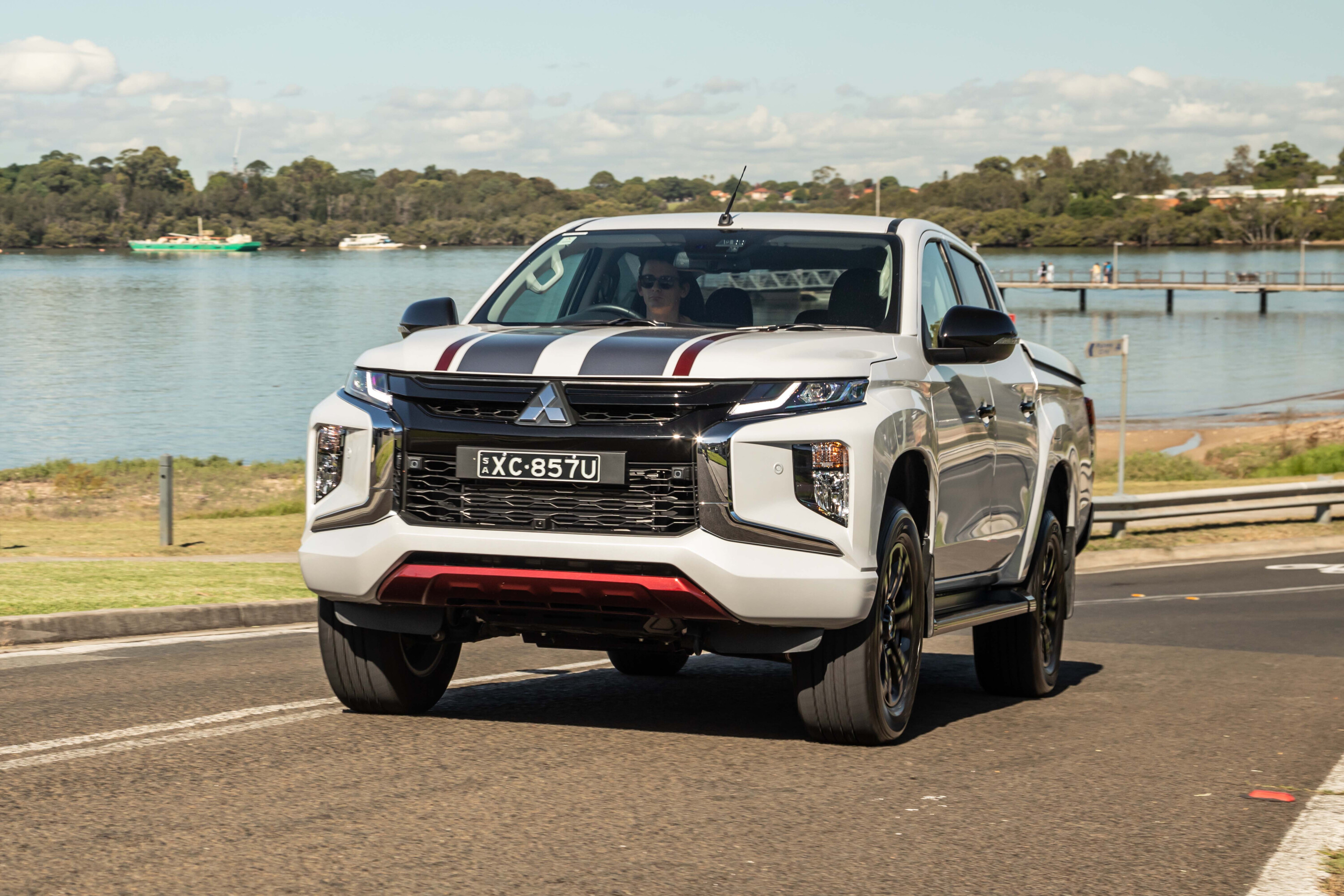Score breakdown
Things we like
- User-friendly Super Select II 4WD system
- Long 10-year warranty
- Compact size makes it nimble
Not so much
- Heavy and slow steering
- Busy unladen ride
- Lazy automatic transmission
One of the most attractive attributes of this 2023 ‘MR’ Mitsubishi Triton (now eight years into its life cycle and due for replacement next year) is its honest simplicity. The ladder-frame chassis can trace its roots back to the 2006 Triton, and although it’s come a long way in those 17 years, the current Triton can’t compete with the class-leading Ford Ranger for outright excellence.
When it comes to value, the Triton’s also under fire from new-start Chinese rivals such as the GWM Ute and LDV T60, as well as South Korean stalwart, the SsangYong Musso XLV.
The next-gen Triton promises a longer and wider body, more safety features, and – probably – a much higher entry price. No doubt, it’ll aid the next Triton against the dominating Ranger/Amarok cousins, but there’s a danger the Triton will lose some of its core rough-and-tumble appeal in the process.
Before the new car arrives in 2024, Mitsubishi is sending off the Triton with 400 examples of this GSR Deluxe-based Sport Edition.
Should you run out and buy the last of this Triton breed?
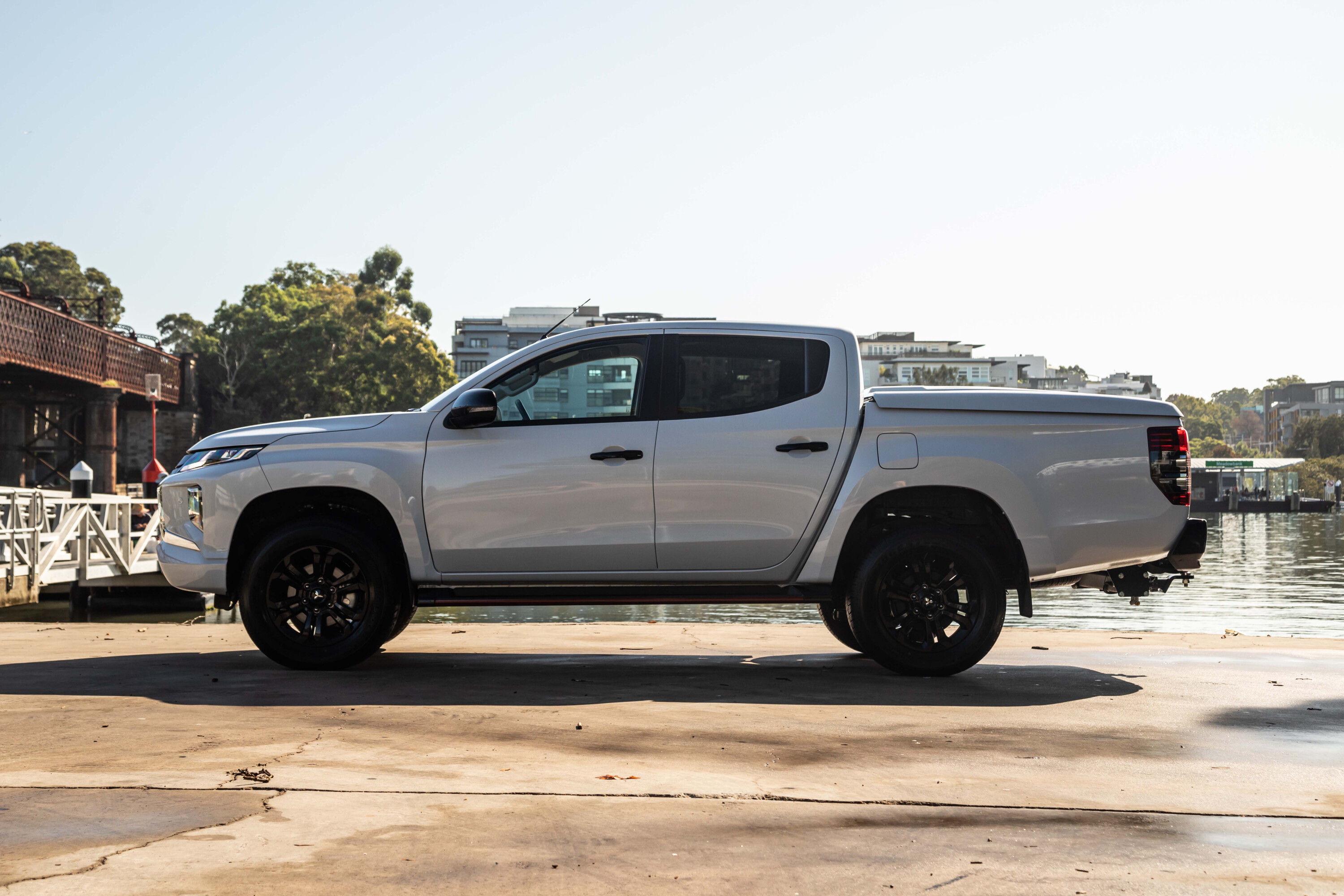
JUMP AHEAD
- How much is it, and what do you get?
- How do rivals compare on value?
- Interior comfort, space and storage
- What is it like to drive?
- How much fuel does it use?
- How safe is it?
- Warranty and running costs
- VERDICT
- Specifications
How much is it, and what do you get?
The Sport Edition fits in towards the top of the Triton range. It’s essentially a GLS fitted with the Deluxe package and a few unique extras – that sticker pack and accented skid plates outside matched with red contrast stitching in the cabin.
You’ll also find a 7.0-inch colour touchscreen and electric driver’s seat adjustment along with the GLS’s Super Select 4WD system and locking rear differential.
It costs $56,440 before on-road costs, marking a $1950 premium over the almost identical GLS with Deluxe pack ($54,490 before on-road costs).

| 2023 Mitsubishi Triton Sport Edition features | |
|---|---|
| Two-tone 18-inch alloy wheels | Accented skid plates |
| Sport Edition decal package | 265/60R18 Bridgestone Dueler H/T tyres |
| 7.0-inch touchscreen | Wired Apple CarPlay and Android Auto |
| 6-speaker sound system | Leather-wrapped wheel and gearshift |
| LED headlights and DRLs | Leather upholstery |
| Driveru2019s seat power adjust | Heated front seats |
| 360-degree monitor | Keyless entry with push-button start |
| Paddle shifters | Dual-zone climate control |

How do rivals compare on value?
The Triton has always been at the cheaper end of the dual-cab spectrum, but as this model has matured and features added, its price has snuck up. The Triton isn’t the bargain it once was.
And while the Triton Sport Edition may have some leather inside, compared to lower-spec new rivals such as the Ford Ranger XLS ($54,130), Isuzu D-Max LS-M ($55,300), and Volkswagen Amarok Style TDI500 ($56,990) – all before on-road costs – it lacks modern technology, sufficiently-sized touchscreens and cabin space.
At $56,440 the Triton Sport Edition has all the off-road features, a clever 4×4 system and a willing and smooth-for-a-ute 2.4-litre turbo-diesel, though we think the regular GSR auto ($51,490 before on-road costs) remains the sweet spot in the current Triton range.

Interior comfort, space and storage
With its nicer leather appointments and contrasting red stitching, the Sport Edition does have some mild visual interest, though the cabin design is dated. Its 7.0-inch touchscreen is small (and has graphics reminiscent of a Nokia 3310), but it does have wired Apple CarPlay and Android Auto.
The Triton’s interior is best described as simple and workmanlike. It would be easy to clean, and the build quality is really rather good. There were no creaks or rattles during our test period – it feels built to stand the test of time and road corrugations.
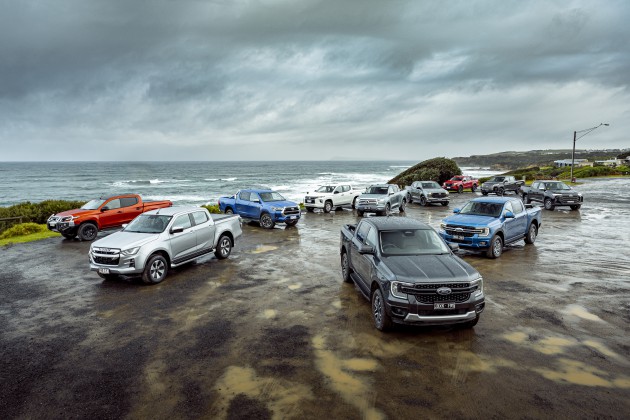
Best Utes: The Daily Living Test
Dual-cab utes have charged in as a firm favourite for family hauling and daily duties, well beyond the old mould of tradie tasks and off-road adventures. It’s time to see which are best suited to the role.
For the new Triton, Mitsubishi could do with borrowing the Outlander medium SUV’s plush seats as they’re far more ensconcing and supportive than the Triton’s flat chairs. The driver’s seat is power-adjustable (the passenger’s manual), but only in six directions with no cushion tilt.
The analogue dials are legible and simple, without being sexy, and incidental storage could do with a Ford Ranger-style revamp; a hot-chip holster and wireless charging pad would be much appreciated.
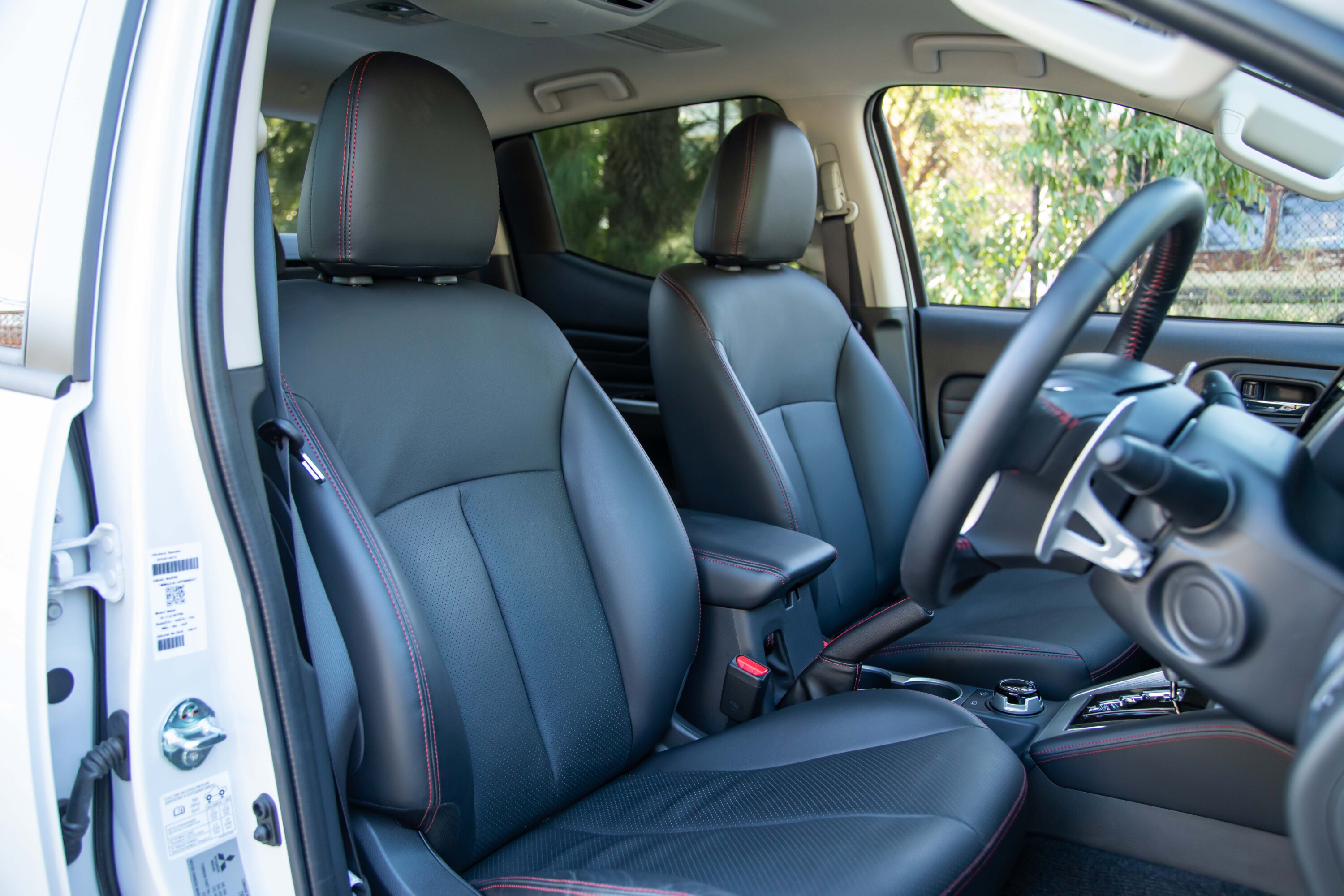
Above the relatively accommodating rear seat is an out-of-the-ordinary ceiling-mounted ventilation pod that does a much better job directing air across the face of passengers – especially children in child seats – than most rivals’ knee-chilling console-mounted air vents.
Where the Triton struggles is width; you wouldn’t want to put three adults, or teenagers, across the rear bench for long periods. The Triton features two sets of ISOFIX attachments for the outboard seats and a pair of top tether anchor points for child restraints. A small amount of extra hidden storage can be found behind the Triton’s backrest.
The Triton’s tray is relatively practical, with the Sport Edition getting a lockable rigid tonneau cover on struts. This is good for safely leaving items in the rear, but does eat into ultimate storage capabilities.
In the Triton’s standard pick-up tub are a plastic bedliner and four tie-down points. It measures 1470mm long and 475mm deep. It’s 1430mm at the widest point, pinching to 1040mm between the rear arches, and is rated for a 909kg maximum payload.
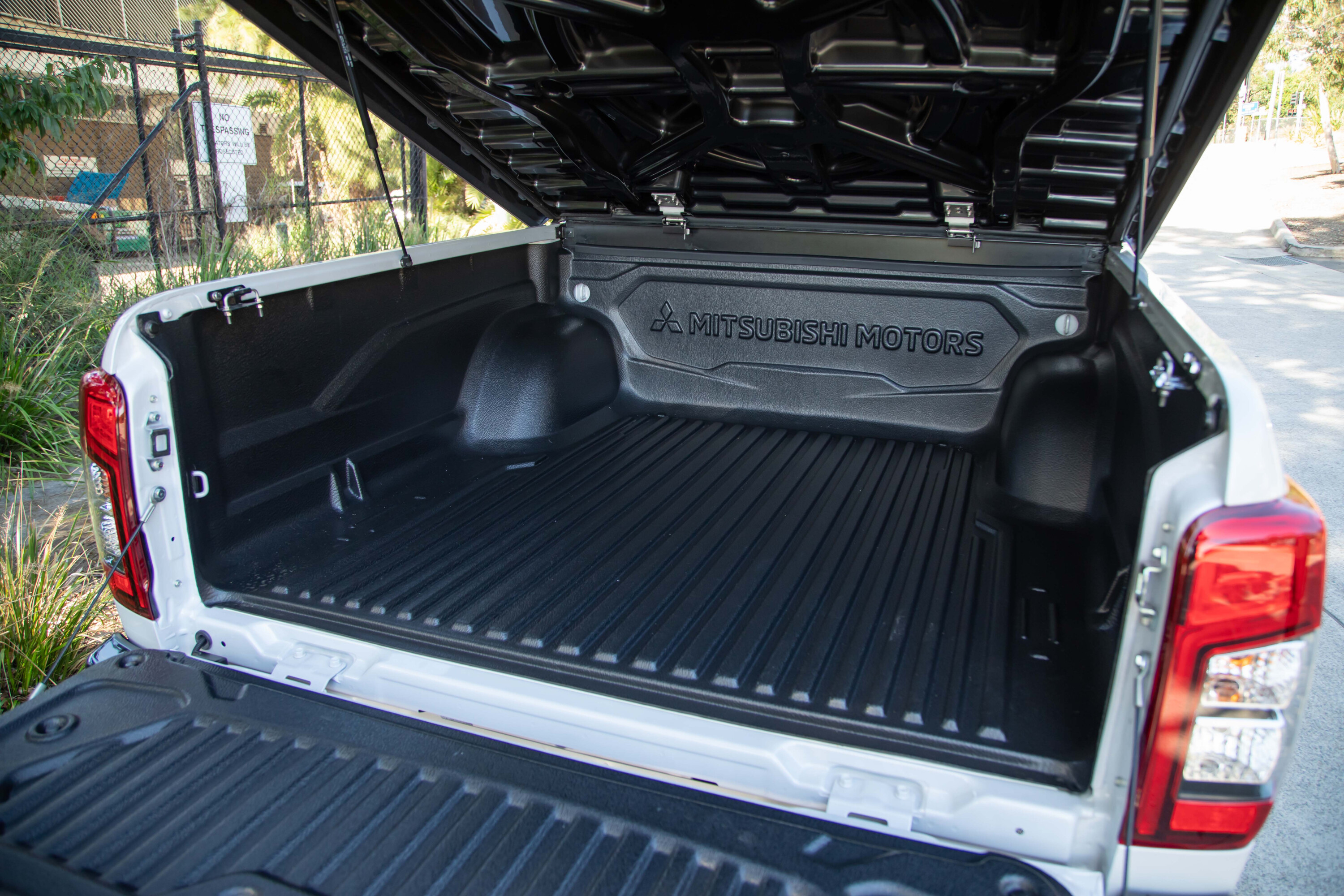
What is it like to drive?
Whether or not you like the Triton will come down to your expectations and needs for a dual-cab. If you’re a long-time Triton, HiLux or D-Max owner, the Mitsubishi is on the money. But if this is your first foray into dual-cab land from a large SUV or passenger car, there are more refined options.
The willing 2.4-litre turbo-diesel four-cylinder produces 133kW/430Nm and is sufficiently refined at low revs. Once above 2000rpm, it motivates the Triton well enough, and previous towing tests (it’s rated up to 3100kg braked) have shown it to be an adequate, if not star, performer. Mitsubishi doesn’t claim a 0-100km/h time for the Triton, but we’ve previously timed its sprint at a rather relaxed 11.63 seconds.
Where the Triton struggles most is rolling response. It’s partially a symptom of the single-turbo’s lack of torque next to the current crop of 500Nm-plus dual-cabs, but the six-speed automatic transmission’s relaxed calibration doesn’t help.
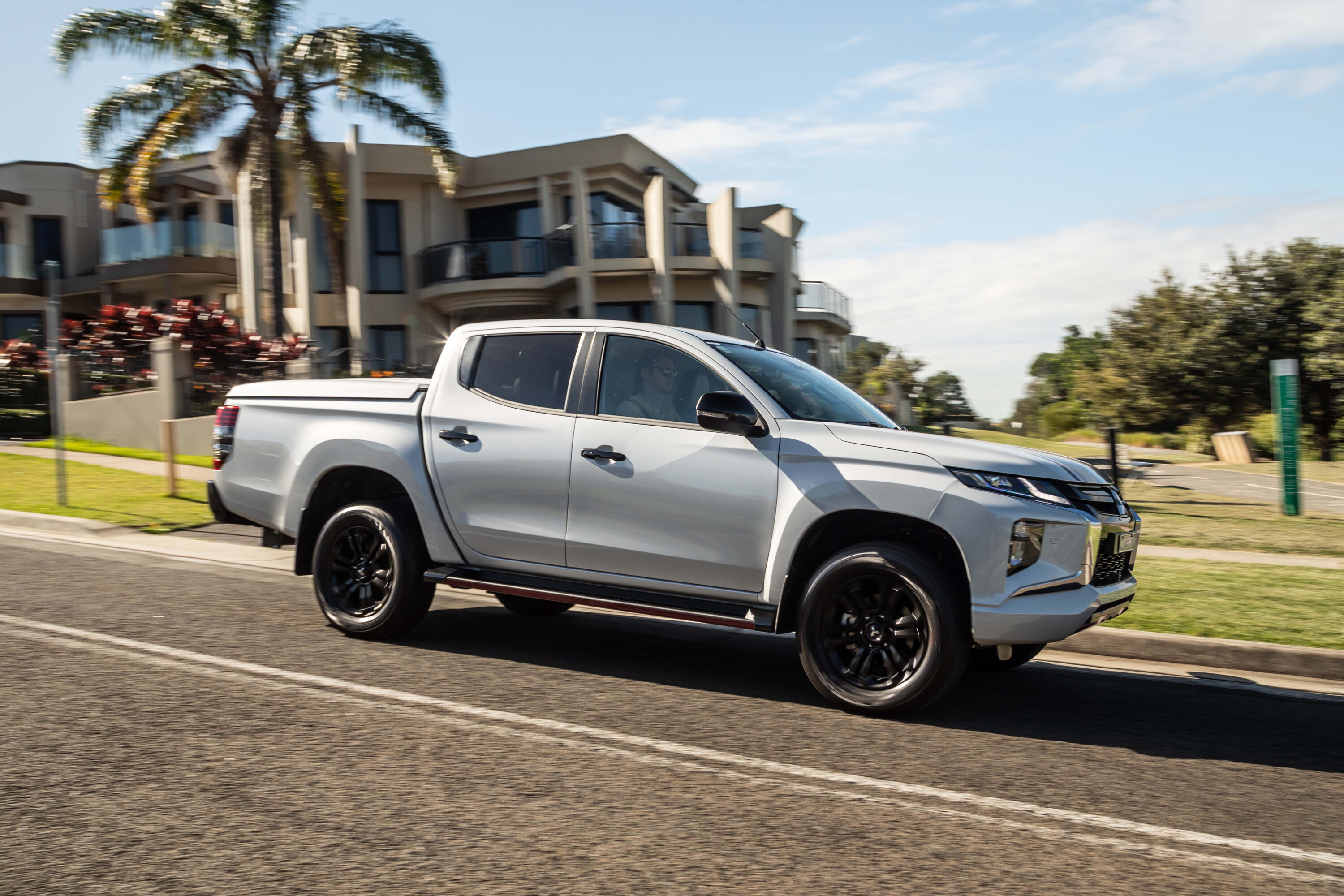
The Triton’s steering is heavy, and slow, and while it doesn’t offer any feel there is a tendency for the wheel to rattle in your hands over sharp-edged bumps. It doesn’t inspire confidence on the road and requires quite a lot of input owing to a slow 3.2-turn lock-to-lock ratio.
Once into the tough stuff, though, the relatively light (1991kg) Triton has a benign and safe chassis with gentle understeer. It’s great for driving quickly on dirt, as you know it isn’t likely to swap ends on you even if it isn’t quite as planted as wider dual-cabs.
For those regularly driving on looser soil, sand, or mud a more aggressive tyre tread would improve grip, though the Triton’s 265/60R18 Bridgestone Dueler H/T tyres strike a pleasing balance between on-road refinement, grip, and security on hard-pack dirt.
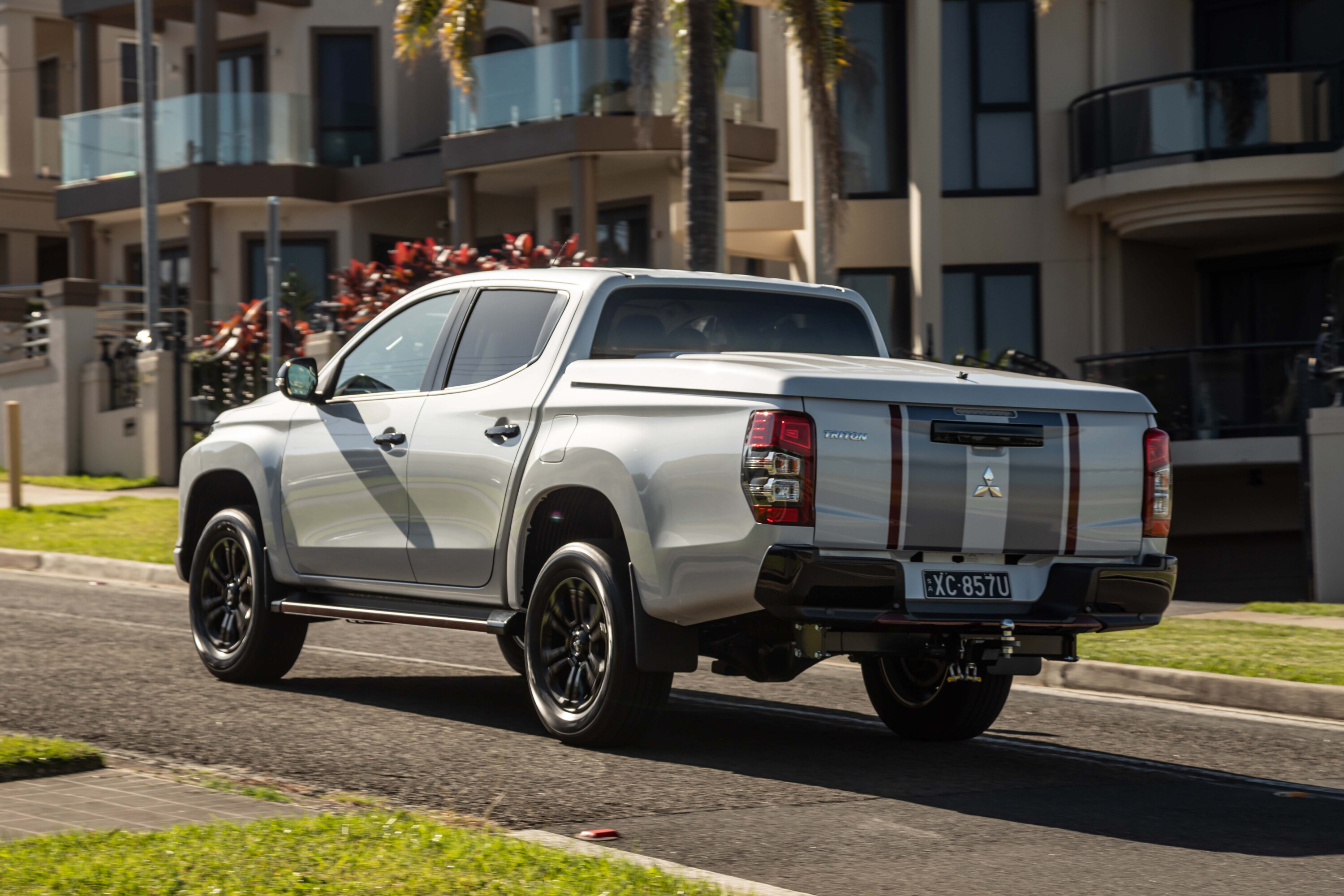
When unladen, the Triton’s leaf-sprung live axle rear end tends to judder, buck and heave over bumps. It’s not damped with much sophistication and, while the ride is firm below 60km/h, it’s also very easy to hit the front bump stops through big compressions above 80km/h.
Though we didn’t take the Triton onto technical trails this time, its Super Select II 4WD system allows you to leave it in four-high with an unlocked centre differential. This makes the Triton more secure to drive on wet asphalt and is an excellent feature for towing.
With its light kerb weight, compact dimensions and low-geared low-range transfer case, the Triton is still a solid choice for someone looking to go off-road or tow medium-sized caravans – but the Sport Edition’s exterior stickers don’t improve the Triton experience.

How much fuel does it use?
The Mitsubishi Triton uses 8.6L/100km on the ADR combined fuel consumption cycle. Over our 200km test loop including highway, suburban and urban driving, the Triton Sport Edition showed 8.6L/100km on its trip computer.
The Triton requires diesel fuel at the bowser and has a 75L tank for an average roving range of 872km.
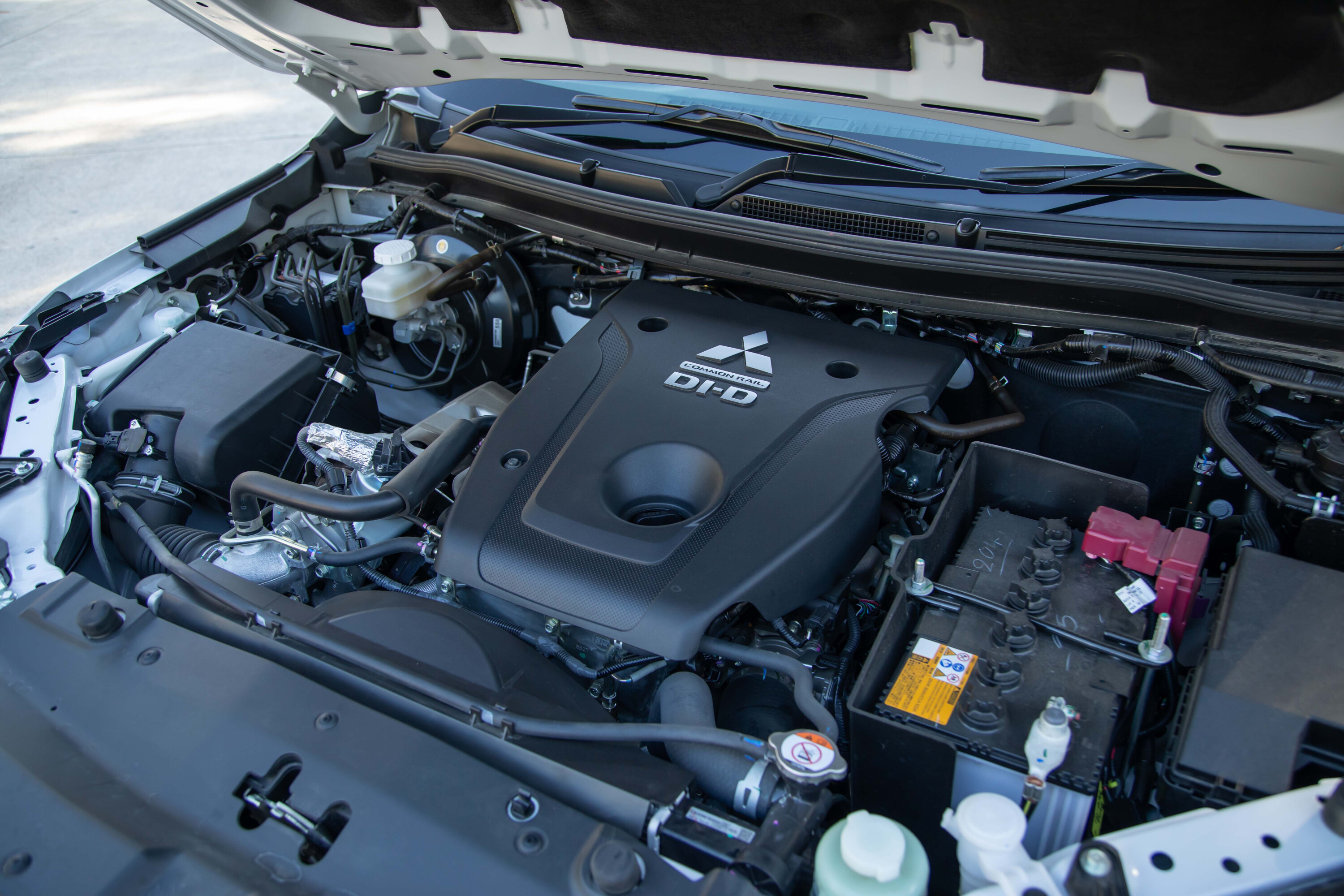
How safe is it?
Mitsubishi has added safety technology over the life of the Triton, though it still misses some features and aids that rivals have implemented. It has regular cruise control with no distance-keeping function and lacks lane-keep assist functionality.
The Mitsubishi Triton’s 2015 ANCAP five-star rating expired on January 1 of this year, so it is therefore considered unrated by the Australasian new car safety testing body.
| Mitsubishi Triton safety features | |
|---|---|
| Seven airbags (including driveru2019s knee) | City-speed AEB with pedestrian detection |
| Blind-spot monitoring | Lane-departure warning |
| Rear cross-traffic alert | Front and rear parking sensors |
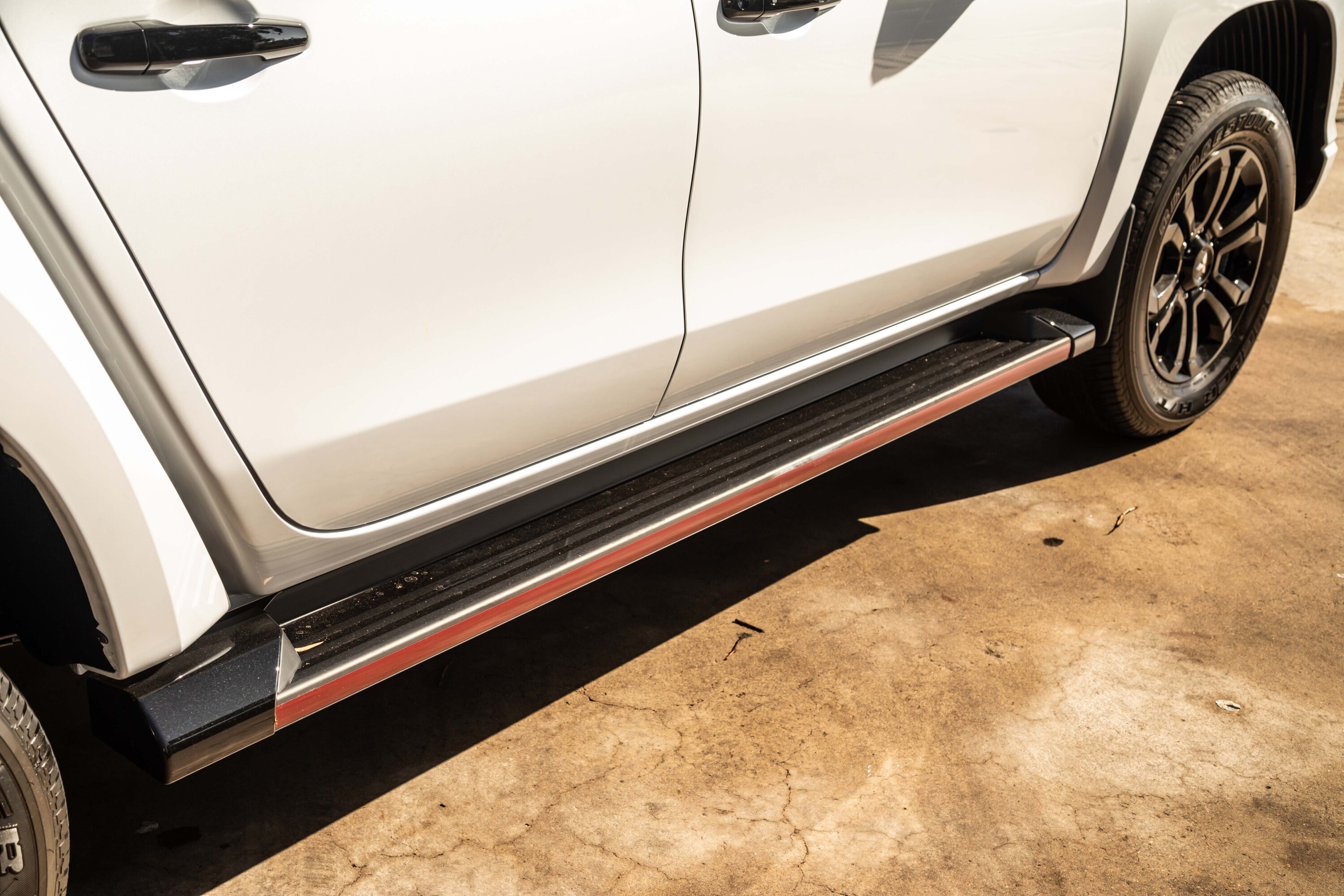
Warranty and running costs
The Mitsubishi Triton is backed by Mitsubishi’s 10-year ‘Diamond Advantage’ warranty which means – providing the Triton is serviced on time at a dealer – Mitsubishi will extend your warranty coverage from the standard five-year/100,000km duration to 10 years or 200,000km.
Maintenance is due every 12 months or 15,000kms – whichever comes first – and pricing is capped for 10 years. Over five years/75,000km of ownership you’ll pay $2895 in scheduled servicing.
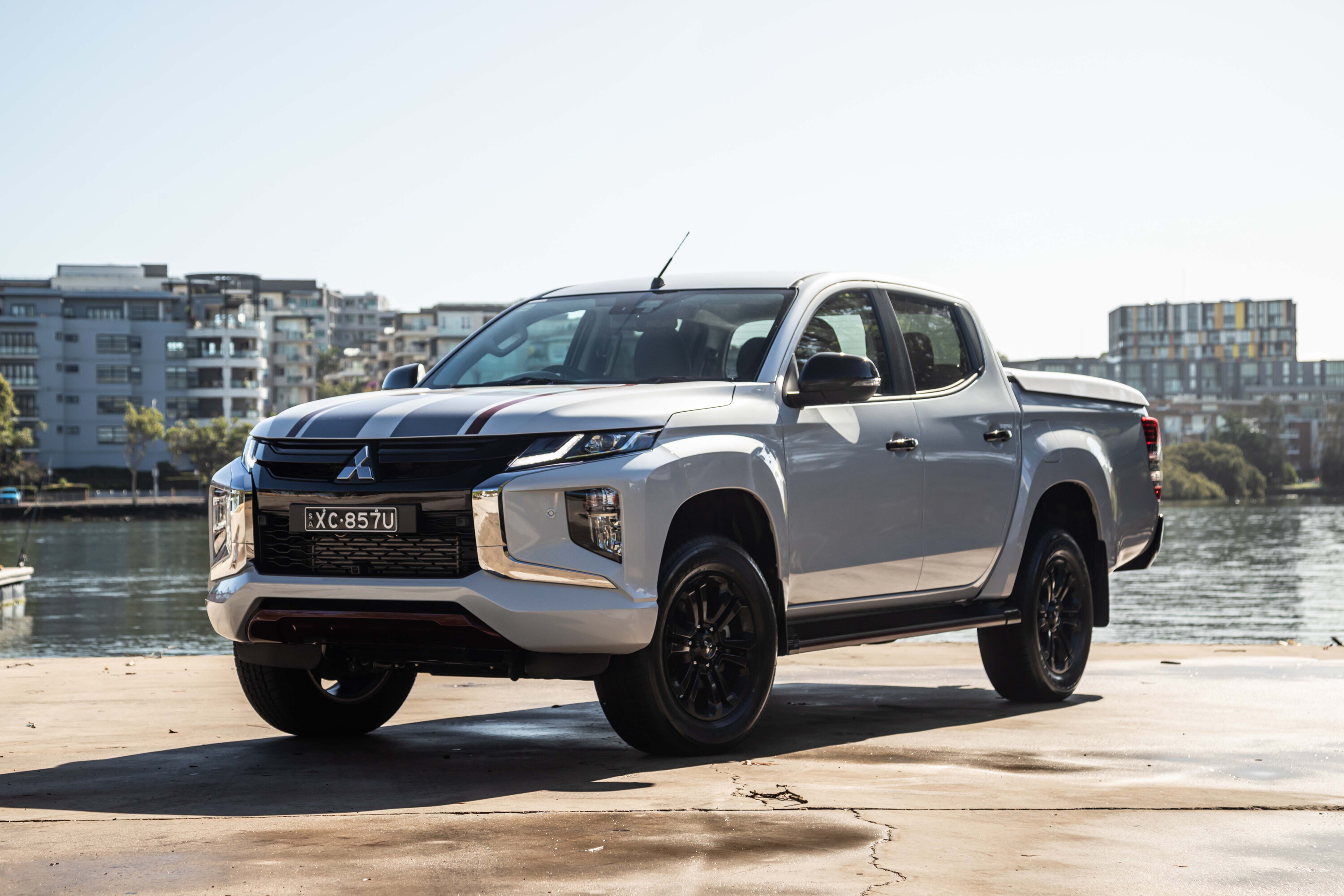
VERDICT
If you’re looking for a dual-cab to replace an SUV for family duties and the occasional off-road bash, the Triton is not the most enticing choice. For all its foibles, the dependable Triton is a ute that wears its attributes with honesty and pride. There’s no veneer of distracting driver aids and chintzy air vents like in a GWM ute; the Triton is what it is.
We wonder if a new Triton that’s bigger and more premium might lose some of the current ute’s down-and-dirty appeal. But the truth is that, right now, there’s a raft of safer, more advanced, and better-driving utes. The next-gen Triton is coming for a slice of that action.
Of the MR Triton range our money would go on a standard GLS, but if you want a leather-trimmed work ute that’s equipped with all the off-road smarts and isn’t afraid to get down and dirty on the weekend, the current Triton Sport Edition still delivers.
| 2023 Mitsubishi Triton Sport Edition specifications | |
|---|---|
| Body: | 4-door, 5-seat dual-cab ute |
| Drive: | selectable four-wheel |
| Engine: | 2.4-litre turbo-diesel four-cylinder |
| Transmission: | 6-speed automatic |
| Power: | 133kW @ 3500rpm |
| Torque: | 350Nm @ 2500rpm |
| Bore x stroke (mm): | 86 u00d7 105.1 |
| Compression ratio: | 15.5 : 1.0 |
| Fuel consumption: | 8.6L/100km (tested) |
| Weight: | 1991kg |
| Suspension: | struts with coils springs front,nlive axle with leaf springs rear |
| L/W/H: | 5305mm/1815mm/1795mm |
| Wheelbase: | 3000mm |
| Brakes: | 296mm ventilated disc front / 11.6u201d drum rear |
| Tyres: | 265/60 R18 Bridgestone Dueler H/T |
| Wheels: | 18-inch alloy (full-size spare) |
| Price (as tested): | $56,440 + on-road costs |
Score breakdown
Things we like
- User-friendly Super Select II 4WD system
- Long 10-year warranty
- Compact size makes it nimble
Not so much
- Heavy and slow steering
- Busy unladen ride
- Lazy automatic transmission
We recommend
-
 News
News2022 Mitsubishi Triton pricing and features
Mitsubishi deletes manual gearboxes from popular double-cab Triton variants
-
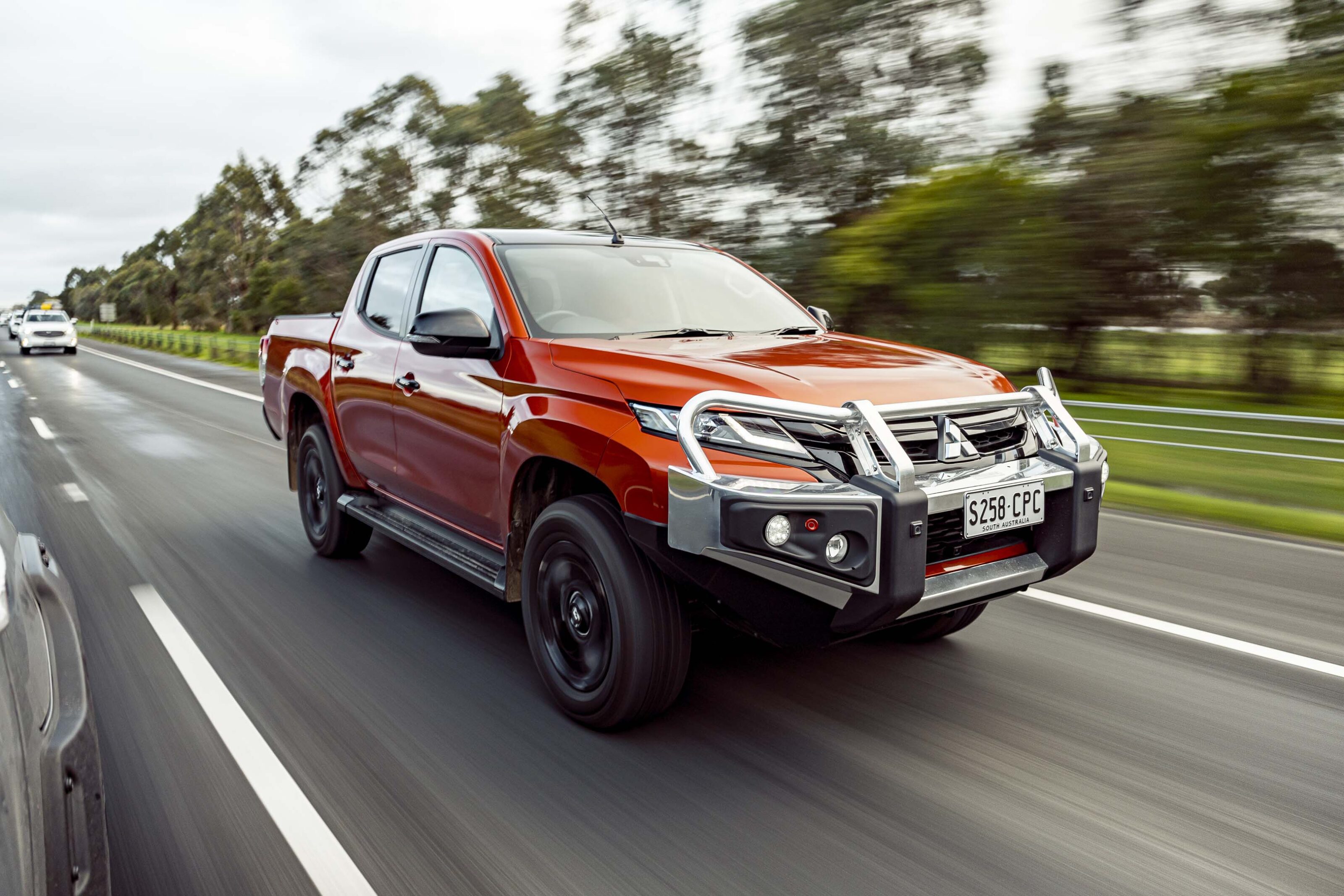 Reviews
Reviews2023 Mitsubishi Triton GSR review
With the next-gen Triton imminent, does Mitsubishi’s flagship GSR still have something to offer?
-
 News
News2025 New Car Calendar: All the new cars coming to Australia
Take a look at our list of what is expected to launch in Australia in 2025 – plus those we might not see locally just yet


